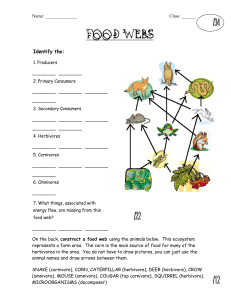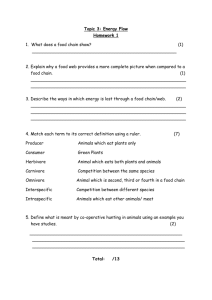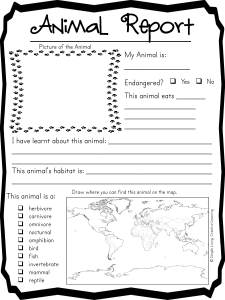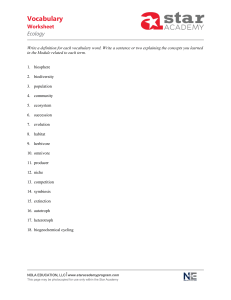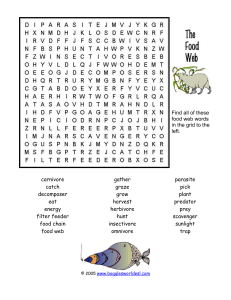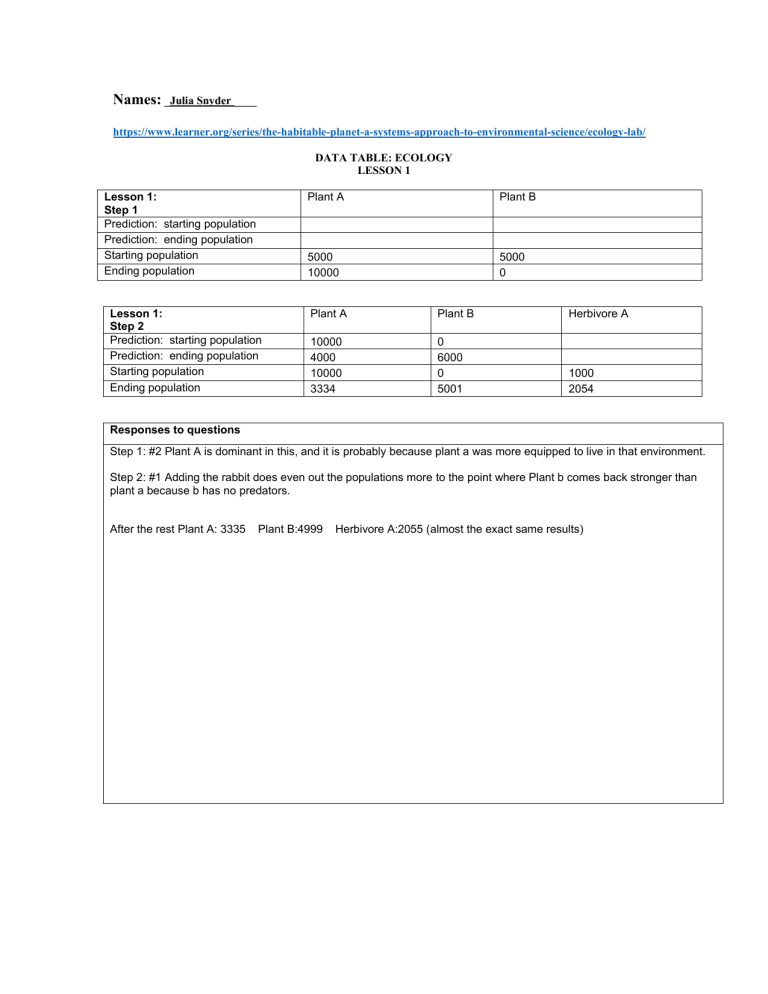
Names: _Julia Snyder ____ https://www.learner.org/series/the-habitable-planet-a-systems-approach-to-environmental-science/ecology-lab/ DATA TABLE: ECOLOGY LESSON 1 Lesson 1: Step 1 Prediction: starting population Prediction: ending population Starting population Ending population Lesson 1: Step 2 Prediction: starting population Prediction: ending population Starting population Ending population Plant A Plant B 5000 10000 5000 0 Plant A Plant B Herbivore A 10000 4000 10000 3334 0 6000 0 5001 1000 2054 Responses to questions Step 1: #2 Plant A is dominant in this, and it is probably because plant a was more equipped to live in that environment. Step 2: #1 Adding the rabbit does even out the populations more to the point where Plant b comes back stronger than plant a because b has no predators. After the rest Plant A: 3335 Plant B:4999 Herbivore A:2055 (almost the exact same results) DATA TABLE: ECOLOGY LESSON 2 Lesson 2: Step 1 (X, , or ) Prediction Simulation 1 Simulation 2 Lesson 2: Step 2 (X, , or ) Prediction Simulation 1 Simulation 2 Modifications made Plant A Herbivore A Omnivore A Top Predator 4557 4588 1815 1699 122 126 X 11 2 Plant A I think they will all find balance 4938 4902 Responses to questions Plant B Plant C Herbivore A Herbivore B Herbivore C Omnivore A Omnivore B Top Predator 937 980 0 0 552 556 552 556 No more plant c 552 556 No more plant c 0 0 No more omni B 0 0 98 225 Step 1: #2 everything would die #3 Plant A increased at the beginning but evened out. Plant a and herbivore a seem to follow the same pattern. #4 Plant A and B would benefit the most because they would get nutrients from them. Step 2: #3 energy flows in all directions and the eating of an organism is the transfer of energy. From: Annenberg Learner
